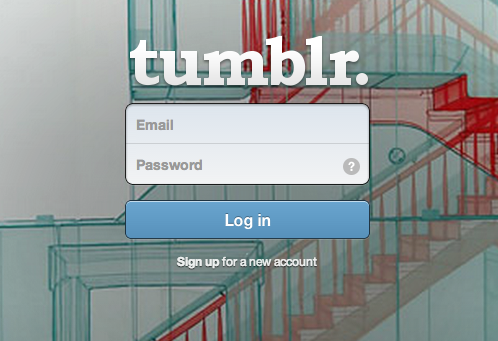This is a guest post by Shanna Mallon of Straight North. 
Are you using Tumblr for business?
If you’re like a lot of marketing professionals, the most you know about Tumblr is the links you’ve clicked to it from Pinterest. But beyond that, does Tumblr matter? Should you be on it? Why or why not? If you use it, what benefits could it provide? And how do you use it? To help answer those questions and to clear up Tumblr misunderstandings take a look below…
Tumblr 101
To understand Tumblr, we have to start at the beginning, with what exactly the network is. Here’s a look at the answer to that question, along with several others that frequently arise.

What Is Tumblr?
Simply put, Tumblr is a free, micro-blogging, social sharing site. It works essentially the same way that blogs do—People set up accounts and then can customize them as they like with personal content. The difference with Tumblr, as opposed to regular blogs, though, is that Tumblr tends towards the sharing of existing content, rather than the posting of new, original content.
Who Uses Tumblr?
Like most social networks, Tumblr has a diverse user base. Nonetheless, it’s especially popular among a younger demographic—according to Quantcast, over half the users are under 34 years old, with another 30% between 35 and 49.

How Do You Get Started on Tumblr?
Setting up an account on Tumblr is simple. Go to https://www.tumblr.com/login, click the signup button, and fill in the blanks. Then, from within your dashboard, you can set up your own Tumblr site.

How Can You Use Tumblr for Business?
You can use Tumblr for business in all the ways you can use blogs for business. Set up a site, give it a professional design, and consistently share relevant content to draw an audience. With Tumblr, in contrast to other social networks, constant activity is welcome. While on Twitter, back-to-back posts can be annoying; on Tumblr, they are welcome.
Which Small Businesses Could Benefit from Tumblr Most?
Because of the visual nature of Tumblr, small companies in visual industries stand to benefit the most from it. Photographers share beautiful images from around the Web. Graphic designers create compilations of good typography and design. And as new content is posted, it continually builds a library of content to boost search rankings and grow a following.
6 Best Tumblr Practices for Businesses
Once you understand what Tumblr is and how to use it, what’s next? Are there general guidelines to keep in mind? The answer is yes. To help ensure you make the most of the network, here are some best practices to implement.
1. Link Back to Original Author:
The biggest problem people have with Tumblr is how often images or other content gets posted without proper attribution. Don’t irritate bloggers and authors by, in essence, stealing what they create. Rather, make sure everything your post cites the original creator and links back to his or her work.

2. Post Often:
Tumblr works best when you use it often. Share content up to five times a day if you like. As an added benefit for the content you share, it stays relevant longer. Unlike Twitter, where updates get buried over time, Tumblr content is more evergreen, still bringing in views months or years later.
3. Tweak the Design:
One of the best ways to make your Tumblr reflect your brand is by customizing the design. Use the “Customize” option, which can be found, in the upper right-hand corner of your dashboard or homepage, and use the options to name your blog, choose its theme, and adjust the style as you like.

4. Focus on Images:
As mentioned earlier in this post, Tumblr is a visual network. The content that performs best is attractive content—interesting photos, infographics, pictures with text overlaid on top, etc.
5. Tag Your Posts:
To maximize your chances of being found, tag your posts with relevant keywords. When people go to search for those keywords, they’ll have an easier time finding you.

6. Make It Your Own:
When you reblog content from another Tumblr, add your own thoughts to it. Use this as an opportunity to add your own personality and brand to what you post—make your comments show why the post is relevant to what you do.
Your Thoughts:
Could Tumblr be a worthwhile tool for your business? Have you ever used Tumblr for business? Please leave your comments below.
About Shanna Mallon
Shanna Mallon is a writer for Straight North, an Internet marketing agency providing SEO, web development, and other online marketing services, with headquarters in Chicago. Follow Straight North on Twitter and Facebook.
